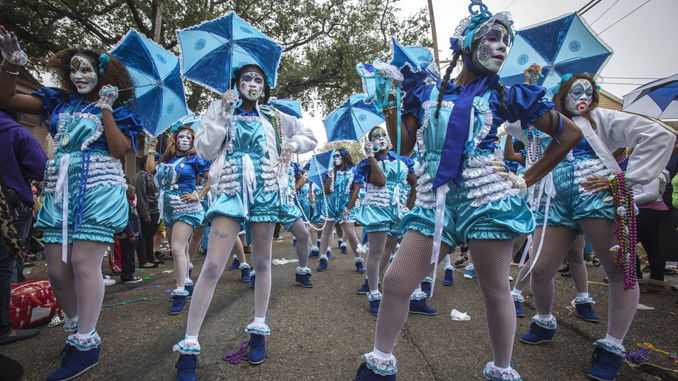
By Eric Connerly
New Orleans: A Colorful History
As we are in the 300th Anniversary of New Orleans, with its rich and colorful history; it is one where the African influence is seen in everything from the food, music, dance and culture. It is everywhere you look and is the heartbeat that continues to pump the blood through the veins of the City keeping it alive.
The Crescent City has just finished the Carnival Season, with its many balls and parades bringing people from across the globe to explore the spectacle and splendor that is the Big Easy.
Black Mardi Gras
The Black Traditions of Mardi Gras, which for a long time, was unknown to those outside of the African-American Community have come to the forefront are now being discovered by others and given their true place and being recognized.
We at Data News Weekly would like to briefly explore some of these great traditions.
Zulu Parade
They marched in Mardi Gras as early as 1901 but made their first appearance as the Zulus in 1909. Their original routes were through the Black neighborhoods of New Orleans. Today they have a route that goes through both African-American and the traditional route along St. Charles Ave. where their beads and customized painted coconuts are highly sought after by people of all races.
Additionally, their Annual Mardi Gras Ball and Lundi Gras Celebration on the River have become major events drawing thousands of people into the City of New Orleans.
Baby Dolls
As part of the Mardi Gras Celebration in New Orleans, the Baby Dolls were formed in 1912. The Baby Dolls were a group started in an area outside the legal red-light district called (Black) Storyville.
The style of the baby doll in the Mardi Gras Celebration was tight or skimpy clothing, some adorned with money and cigars, throwing it at the observing men. Their instruments included the washboard, the kazoo, the guitar, and a big No. 3 tub for the bass drum. Throughout the years, the women expanded their group, collecting dues and possibly becoming the first women’s organization in the Mardi Gras Celebration. Their styles then varied, even being dressed as actual babies, or baby dolls, depending on the group.
There was a period of decline, but after Hurricane Katrina where an emphasis on preserving a cultural tradition many groups calling themselves the Baby Dolls formed including: the 504 Eloquent Baby Dolls and other older groups continued to carry on the tradition including the Gold Digger Baby Dolls, the Treme’ Million Dollar Baby Dolls and the Ernie K-Doe Baby Dolls.
Black Masking Tradition (Mardi Gras Indians)
The Black Masking Tradition (Mardi Gras Indian) is as old as the City itself beginning in 1718. As slavery spread slaves began to escape and found refuge with the indigenous people. They eventually begin to intermarry and form communities. The Africans who were already masking integrated some of the native people’s traditions with their own to create what is known as the Black Masking (Mardi Gras Indian) Tradition.
New Orleans Blacks, many coming from the Senegambia Region of West African were already using masks, feathers and beads to create costumes for ceremonies. Blending these traditions and taking a year to make a suit the aim is to tell a story and to make a “pretty” suit to be debuted on Carnival Day. Mardi Gras Indians traditionally were divided based on wards and parts of town. In post-Katrina there is more of a togetherness among the tribes where they come together in the spirit of unity to keep this great tradition alive.
Black New Orleans Traditions and its Future
The City is at a crossroads where many of the traditions and institutions are under assault, but the Black presence continues to be important.
As more of the untold stories of Black New Orleans are being told and unfolding it is showing that it is something worth not only studying but preserving and allowing it to thrive.
Recommended For You.



Be the first to comment